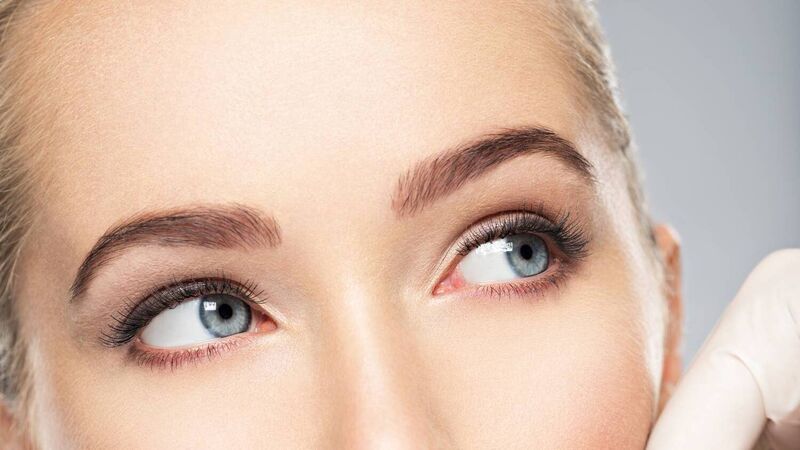The Skin Nerd: The treatments on trend for 2024, from collagen boosting injections to acne lasers

young woman gets botox injection in her lips. Woman in beauty salon. plastic surgery clinic.
Research has revealed that 81 percent of consumers are more accepting of noninvasive aesthetic treatments than they were five years ago – and don’t we know it?** With consumer segments growing and diversifying, technological innovation has risen to meet these needs and it doesn’t seem a day goes by without a new, next-gen treatment going viral.
I get asked so much about my opinion on tweakments and treatments, which brands work and what you should consider for scarring, acne or pigmentation. There are so many treatments out there and the sector is evolving rapidly in terms of technology and innovation. So, what is right? What should you consider? Where does skincare fit into this and who should you seek counsel from? The answer is, you need to seek advice from someone qualified and specialised in aesthetics that you are interested in pursuing.
Finding someone you trust is paramount and for that reason, I want to recommend the Institute of Dermatologists, Ireland ( instituteofdermatologists.ie). Founded by Professor Caitriona Ryan and Professor Nicola Ralph, this world-class facility offers patient-centric care from a team of medically trained professionals. This doesn’t mean that you shouldn’t also do your research!
Preparation is key and so this week, I am bringing you an update on the latest treatments and some essential things to consider before making any decisions.
What is it: PRP (Platelet Rich Plasma) is injected into the skin to boost collagen production and skin regeneration. What happens is that a small vial of blood is drawn before a centrifuge is used to separate the red blood cells from the platelets and growth factors, which is then used on the skin for rejuvenation purposes. Growth factors in plasma work to increase collagen and elastin production, stem cell proliferation and vascular formation. Once injected back into the skin, the area is said to be tightened and noticeably plumper. PRP can also be used for hair restoration and is often used in hair transplants.
I undertake PRP to address the hollowness underneath my eyes and I love to see improvements including the fading of discoloration, the plumping of the skin in this area and a noticeable improvement of the general hydration levels.
Nerdie note: PRF (Platelet-Rich-Plasma Fibrin) is said to be 2024's update on the treatment, delivering a higher concentration of platelets and growth factors for additional rejuvenation benefits. Research has also backed PRF for tissue repair and it has been shown that the treatment can be more effective for treating acne scars than PRP.
What it is: Using CO2 laser energy for skin resurfacing, and radio frequency microneedling for deep dermal remodeling, Secret PRO treats the full thickness of the skin from epidermis to the deeper dermal layers independently or together. "Laser treatments can dramatically improve acne scars," says Professor Ryan. "Fractionated ablative lasers, particularly C02 lasers, are the most effective treatment for acne scarring.
"Fractionated lasers use microscopic beams of light to penetrate the deeper layers of the skin, breaking down scarred skin and stimulating the body's own natural healing processes to produce new, healthier skin. The laser targets a pixelated fraction of the treatment area during each treatment session, leaving the remaining microscopically untreated skin to help rapidly heal the treated areas. The new SecretPro laser combines CO2 fractionated ablation with radiofrequency microneedling for the most effective acne scarring treatment to date."
This treatment is suitable for all skin types and can help to address fine lines and deeper wrinkles, scars, stretch marks, uneven skin texture and crepey skin and sun-damaged skin.
Predicted to be one of 2024’s biggest skincare trends, Exosome therapy has been gaining traction over the past few years, with dermatologists praising the skin-soothing, anti-inflammatory benefits.
Exosomes are nanoparticles released by cells in the body and contain skin nourishing lipids, peptides and growth factors. Working as bio-stimulators, when applied to the skin, these ‘messengers’ send signals to unhealthy cells, prompting the body's natural healing process and triggering regeneration. Often combined with microneedling, results are impressive, with one study finding that exosomes were 75% more powerful than retinol.
What is it: Polynucleotides - chains of nucleotides (molecules) derived from fragments of fish DNA (which mirrors human DNA) - are injectable biostimulators that are being used to boost skin health at a cellular level. Unlike hyaluronic acid skin boosters such as Profhilo, polynucleotides move beyond hydration and firming benefits, communicating with cells to boost collagen and elastin production. With the ability to be used under the eyes, on the jawline, cheekbones, face and neck, the most requested injection site is said to be the under-eye area, where polynucleotides assist in boosting collagen production and improving skin texture.
Aesthetics should not be used in isolation. Instead, it is important to prioritise skin health, and look at how we are treating our skin from the inside, outside and on top. If we look at ageing in terms of extrinsic and intrinsic factors, there are a number of factors to consider, which will vary by individual - including levels of sun exposure, lifestyle and genetics.
Prevention is better than cure when it comes to tweakments. So, it’s essential to look at the health of the skin and how we protect and care for it. Examples of this include the use of SPF and serum cocktailing with active ingredients and antioxidants. It also includes good nutrition and a balanced diet. Supplements can help to support any nutritional gaps.
AYA Vit C, (€14.95, pharmacies nationwide) is one of my go-to's and helps to protect cells from oxidative stress and contributes towards collagen formation for many body tissues including skin, gums, teeth and cartilage. Once we have considered what we can do with skincare and lifestyle, we can see if we can improve overall skin health with treatments.
- Sources Grand View Research, 2023









